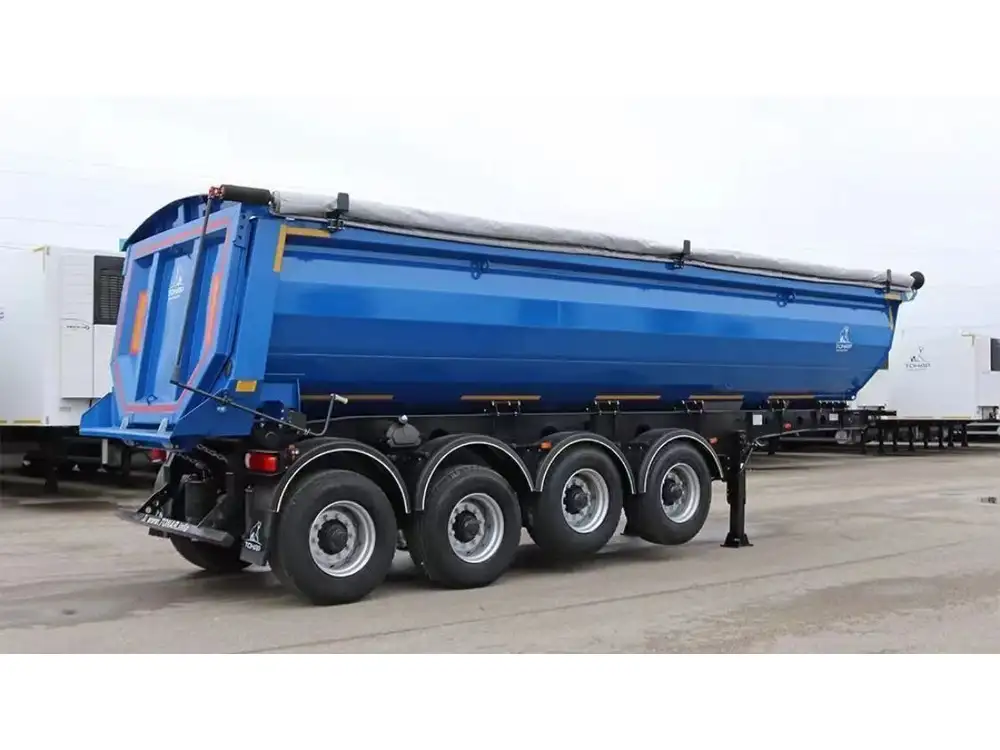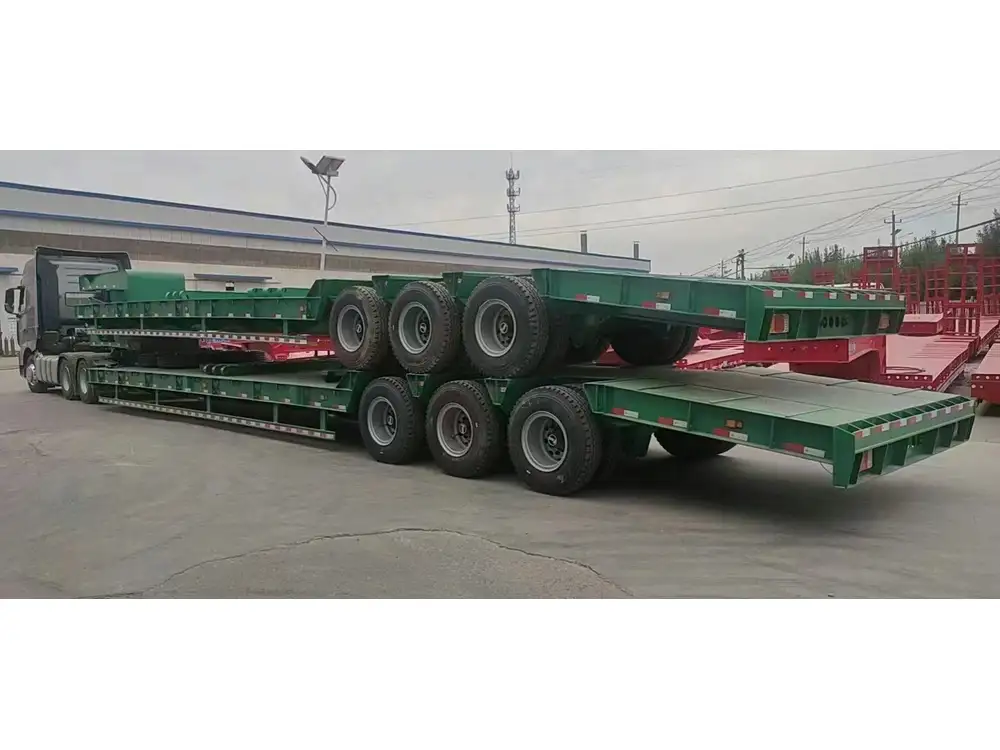When it comes to transporting cargo using flatbed trailers, understanding height limitations is crucial for ensuring compliance with regulations and maintaining safety on the road. Various factors come into play, including state and federal regulations, load types, trailer specifications, and environmental considerations. In this guide, we delve into the intricacies of height restrictions for loads on flatbed trailers, helping manufacturers, logistics companies, and independent operators navigate the complexities of transporting tall goods.
Table of Contents
Understanding Flatbed Trailers
- 1.1 Types of Flatbed Trailers
- 1.2 Common Uses and Applications
Height Regulations Overview
- 2.1 Federal Height Limits
- 2.2 State-Specific Variations
- 2.3 Special Permits and Exceptions
Factors Influencing Load Height
- 3.1 Trailer Specifications
- 3.2 Load Types and Characteristics
- 3.3 Environmental Considerations
Practical Guidelines for Securing Tall Loads
- 4.1 Best Practices for Load Heights
- 4.2 Equipment and Tools Required
Consequences of Overheight Loads
- 5.1 Legal Implications
- 5.2 Safety Risks
Conclusion
1. Understanding Flatbed Trailers

1.1 Types of Flatbed Trailers
Flatbed trailers come in various configurations to suit different cargo requirements, each impacting how load height is managed. Common types include:
| Trailer Type | Description | Common Uses |
|---|---|---|
| Standard Flatbed | A flat, open platform without sides or a roof. | General freight, construction material transport. |
| Step Deck Trailer | Features two levels, with a lower deck for taller loads. | Heavy machinery, oversized equipment. |
| Double Drop Trailer | Allows for even greater heights by dipping below standard height. | Extremely tall cargo, such as wind turbine parts. |
Understanding these variations helps transporters select the right trailer for their specific height needs.
1.2 Common Uses and Applications
Flatbed trailers serve a multitude of industries, from construction and manufacturing to agriculture and infrastructure. Loads can range from lumber and steel beams to industrial equipment and vehicles, each with potentially different height restrictions based on material characteristics and intended routes.
2. Height Regulations Overview

2.1 Federal Height Limits
In the United States, the Federal Highway Administration establishes a maximum legal load height of 13 feet 6 inches (4.15 meters) for commercial vehicles on interstate highways. These limits ensure uniformity and safety across state lines, facilitating effective regulation of height restrictions.
2.2 State-Specific Variations
While federal regulations provide a baseline, many states have additional restrictions or allowances based on local infrastructure and safety considerations. Below is a sample of state variations:
| State | Standard Height Limit | Special Conditions |
|---|---|---|
| California | 14 feet | Specific routes allow for higher loads. |
| Texas | 14 feet | Additional permits may be needed for certain highways. |
| Florida | 13 feet 6 inches | Requires permits for loads over 13’6″. |
Researching local laws is essential before embarking on a journey with tall loads.
2.3 Special Permits and Exceptions
For loads exceeding the standard height limit, obtaining a special permit is often necessary. These permits can vary in terms of cost, processing time, and required documentation. Understanding this process is vital for ensuring compliance and avoiding fines or delays.

3. Factors Influencing Load Height
3.1 Trailer Specifications
The specifications of the flatbed trailer itself play a significant role in determining how tall a load can safely be. Key considerations include:
- Trailer Height: The overall height of the trailer can dictate the maximum load height.
- Ramps: Some trailers come equipped with adjustable ramps, impacting the total vertical space available.
- Weight Distribution: Ensuring that height does not compromise stability is crucial.
3.2 Load Types and Characteristics
Different types of loads have different stacking capabilities and weight limits that can affect height:
- Bulk Materials: Often can be piled higher due to less concern about stability.
- Large Equipment: May have strict size and height restrictions based on structural integrity.
- Vehicles: Require special consideration regarding wheel clearance and lighting regulations.

3.3 Environmental Considerations
Environmental factors such as overhead structures (bridges, power lines) must be accounted for while planning load heights. Compliance with these elements is critical in preventing accidents and ensuring safe passage.
4. Practical Guidelines for Securing Tall Loads
4.1 Best Practices for Load Heights
When securing tall loads, following best practices ensures safety and compliance:
- Measure Once, Measure Twice: Always confirm the height of the load and trailer before transport.
- Know Your Route: Identify potential height restrictions along the transportation route, including bridges and tunnels.
- Use Load Marking: Clearly mark the height of the load with flags or high-visibility tape to alert other drivers.

4.2 Equipment and Tools Required
Effective load management requires specific tools and equipment, including:
- Tension Straps: To secure the load tightly to prevent movement.
- Height Markers: Used to establish the total height of the loaded trailer.
- Ramps: If applicable, ensure they meet the loading height standards.
5. Consequences of Overheight Loads
5.1 Legal Implications
Transporting loads that exceed the legal height limits without proper permits can result in significant legal ramifications:
- Fines and Penalties: These can range from minor fines to serious legal consequences for repeated violations.
- Impounding of Vehicles: Authorities may impound vehicles transporting illegal loads until compliance is achieved.

5.2 Safety Risks
Overheight loads pose substantial safety risks, including:
- Increased Accident Risk: Higher loads have a greater chance of coming into contact with overhead obstructions.
- Load Instability: Excess height can lead to shifting during transit, compromising vehicle control.
6. Conclusion
In summary, understanding the limitations of how tall a load can be on a flatbed trailer is vital for compliance with regulations, safety, and overall efficiency in transportation. By thoroughly grasping federal and state height limits, assessing the specifications of the trailer, accounting for various load characteristics, and utilizing best practices, manufacturers and transport operators can successfully manage the complexities of transporting tall loads. Make informed decisions, stay educated on local regulations, and prioritize safety throughout the process to ensure seamless transportation experiences.



